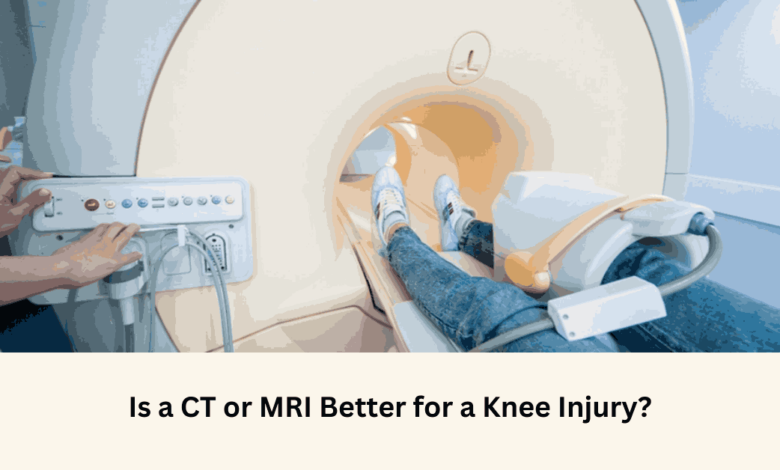Is a CT or MRI Better for a Knee Injury?

Modern diagnostic imaging technologies like computed tomography (CT) and magnetic resonance imaging (MRI) help diagnose knee injuries and estimate their severity.
A knee surgeon uses medical imaging to get accurate diagnosis for effective treatment. Here is a comparison of both CT and MRI scans, highlighting which is better for diagnosing a knee injury:
Imaging Precision
CT scans provide excellent accuracy for detecting fractures and other bony abnormalities, while MRI scans are better at detecting soft tissue injuries like ligament tears and cartilage damage.
The overall level of accuracy depends on the specific injury and individual factors like body size and shape. In some cases, your knee surgeon could require both a CT and MRI scan to provide a comprehensive diagnosis.
Soft Tissue Evaluation
An MRI is better for soft tissue evaluation due to its superior resolution. MRI scans can accurately detect most of the soft tissue injuries in the knee, including ligament tears and cartilage damage.
A CT scan is less effective at evaluating soft tissue injuries but provides excellent detail for bone fractures and bone-related injuries. In some cases, both CT and MRI scans may be required to provide a complete picture of the injury.
Radiation Exposure Versus Detailed Imaging
CT scans generate images using X-rays, and patients are exposed to a small amount of ionizing radiation, which may potentially accumulate over time with repeated scans. MRI scans use a magnetic field and radio waves to generate images without exposing the patient to ionizing radiation.
Although CT scans provide more detailed imaging, they may be recommended only for certain cases. MRI scans are recommended for most knee injury assessments as they provide adequate detail while avoiding radiation exposure.
Cost Considerations
CT scans are less expensive than MRI scans, but both procedures have variable costs depending on the clinic, location, and other factors.
Insurance coverage can also affect the cost of a CT or MRI scan for knee injury assessment. In some cases, insurance companies may require prior authorization before covering the cost of an MRI or CT scan.
Patient Experience and Time Efficiency
CT scans do not take as long as MRI scans, so patients may spend less time inside the machine. Certain CT machines also have a larger opening, making them more accessible for patients with claustrophobia.
CT scans can be quicker than MRI scans, making them a better option for emergencies like bone fractures. MRI scans take longer but provide greater detail and accuracy. Consult a reputable doctor when choosing between the two options.
Pediatric Considerations
Pediatric patients require special consideration with imaging choices because of their developing bones. CT scans expose children to ionizing radiation. MRI scans, which do not involve ionizing radiation, can be a better option for pediatric knee injury diagnosis. Young children could have difficulty staying still for long periods, making MRI imaging more challenging.
Contrast Sensitivity
Contrast agents are used to enhance diagnostic clarity in both CT and MRI procedures. CT scans require iodinated contrast agents, while MRI uses gadolinium-based agents.
CT contrast agents pose a higher risk of allergy compared to MRI agents. Gadolinium contrast agents are not safe for patients with kidney problems, which may limit their use. Contrast agents play a role in differentiating between soft tissues, enhancing diagnostic accuracy.
Seek a Qualified Knee Surgeon for Imaging Tests
Both CT and MRI scans have their strengths and weaknesses in assessing knee injuries. CT scans provide excellent bone detail, making them a preferred choice for fracture or bone-related injuries.
MRI scans offer superior soft tissue evaluation and provide adequate detail while avoiding radiation exposure. CT and MRI scans are beneficial diagnostic tools that help doctors assess and treat knee injuries effectively. Seek an experienced knee surgeon when deciding between the two imaging choices.




